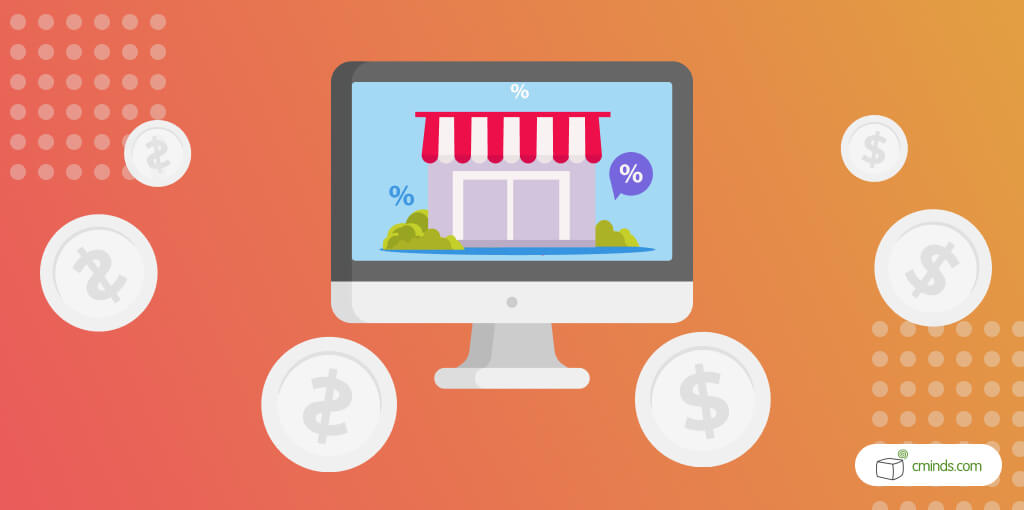There are lots of eCommerce pricing strategies out there. We hope this guide helps you find the one that’s right for you.

Pitching your products at the right price is essential for your eCommerce store’s success.
Deciding on a price isn’t as simple as you might think – there are lots of pricing models to consider and factors to take into account.
In this blog we take a look at 7 pricing models that every online seller should know. Whether you’re getting ready for launch or need to change tactics to increase sales, read on for more info on eCommerce pricing strategies.
April 2025 Offer – For a Limited Time Only:
Get WordPress 99+ Plugins Mega Bundle for 15% off! Don’t miss out!
Getting to Know eCommerce Pricing Strategies

If you’re selling online for the first time, you might be feeling bamboozled by all the business phrases flying around. So it’s time for a little pricing strategy 101 before we dive into looking at specific eCommerce pricing strategies.
What is a Pricing Strategy?
A pricing strategy is a model or method used to determine the best price for goods or services.
So, put even more simply, it’s how you decide what your products (or services) should cost.
Why Are Pricing Strategies Important?
If you charge too much for what you sell, you decrease your chance of a sale. If you charge too little, you risk operating at a loss. Finding that sweet spot is important if you plan to be in eCommerce for the long haul.
Why Do You Need a Pricing Strategy?
Having a pricing strategy in place is a good business decision. It ensures that you get the best of both worlds – giving your customers value for money while maximising your store’s profit.
How Do You Choose a Pricing Strategy?
There are multiple things you need to consider when it comes to choosing the right pricing strategy. These inclue:
Your costs. Take into account all of your costs. That’s production, labour, shipping, and marketing added together. You want to make sure you can cover these costs in sales.
Value for money. Few people make purchases if they don’t feel they’re getting value for money. You need to make sure your pricing is competitive for your niche.
Your target market. You should have a strong idea of your target market when you come to pick a pricing strategy. Consider whether your target customer has disposable income to splash, or whether they’re likely to be more frugal as this will also influence your strategy.
The eCommerce Pricing Strategies You Need to Know

So, now we’ve covered the basics, let’s take a closer look at some useful eCommerce pricing strategies.
1. Cost Based Pricing
This is perhaps the most obvious of all the eCommerce pricing strategies, but it’s worth considering nonetheless.
Cost based pricing focusses on how much profit you hope to make from your sales.
You need to look carefully at all of your costs as detailed in the previous section. Using this model, you would then set your price according to the profit margin you ideally want.
It’s a basic, age-old model, but it still works just as good as any.
2. Penetration Pricing
This is a good option when you’re just starting on your eCommerce venture or launching a new product.
Penetration pricing involves launching a product at a lowered price – but only temporarily. It’s a good way to get your foot in the door and gain market share in your product niche.
The idea is to hook new customers in with the discounted price and let the quality convince them it’s worth paying the slightly higher, full price.
3. Loss Leader
A hugely popular eCommerce pricing strategy is the loss leader.
Picture this: you log on to your favourite store and see a high-ticket item you’ve been wanting at a big discount. You add it to your cart. You look at the price, overjoyed at such a bargain. And you think “well, I’m getting a good discount on this – might as well grab a few more bits while I’m here.” Before you know, your cart is full to the brim.
If you’ve found yourself in this scenario, congratulations – you’ve been hooked in by a loss leader.
It’s a strategy where businesses lure in customers with a discounted price, and then subtly encourage them to buy other items too. Clever, eh?
4. Competitive Pricing
This is another tried and tested, straightforward method for pricing products.
It involves researching your competitor’s price points and then consciously setting your prices lower.
It does exactly what the name suggests: keeps your pricing competitive.
This one can be tricky for brands that are just starting out, but it’s an important strategy that every online seller should know.
5. Bundles
Next up is bundle pricing.
You’ll most commonly find bundle pricing at the grocery store, but it’s common in other retail stores too. Think t-shirts that come in packs of two or games consoles that are bundled with a game.
Bundling can be helpful to increase sales volume. It works because they feel they’re getting an even better deal.
Just be aware that bundle pricing can lead to a decrease in profit, so make sure you won’t be making a loss on any bundled goods.
6. Economy Pricing
With economy pricing you set your price low but gain revenue through increased sales volume.
Typically, it’s only a good pricing strategy for products with a low production cost. When production costs are low, you can easily recoup the loss through the volume of sales.
7. Anchor Pricing
Anchor pricing is another technique widely used by retailers.
The anchor pricing model can be used in one of two ways. During a sale, you can list the sale price next to the original price. This highlights to the customer what a good deal they’re getting.
Alternatively, during times when you don’t have a sale on, you can simply list more expensive products next to cheaper ones. This will draw customers attention to both products and encourage more sales.
eCommerce Pricing Strategies Aren’t Cut and Dry

It might sound obvious, but your product prices are essential to the success of your online store.
Having a pricing strategy in mind is really important, but it’s not something you should fret over. Pricing strategies are dynamic and can evolve over time.
It may take some trial and error to get your pricing right. There’s no one size fits all approach when it comes to eCommerce pricing strategy.
Just remember the tips in this blog, and you’ll find that sweet spot that makes your products fly off the (virtual) shelves.


